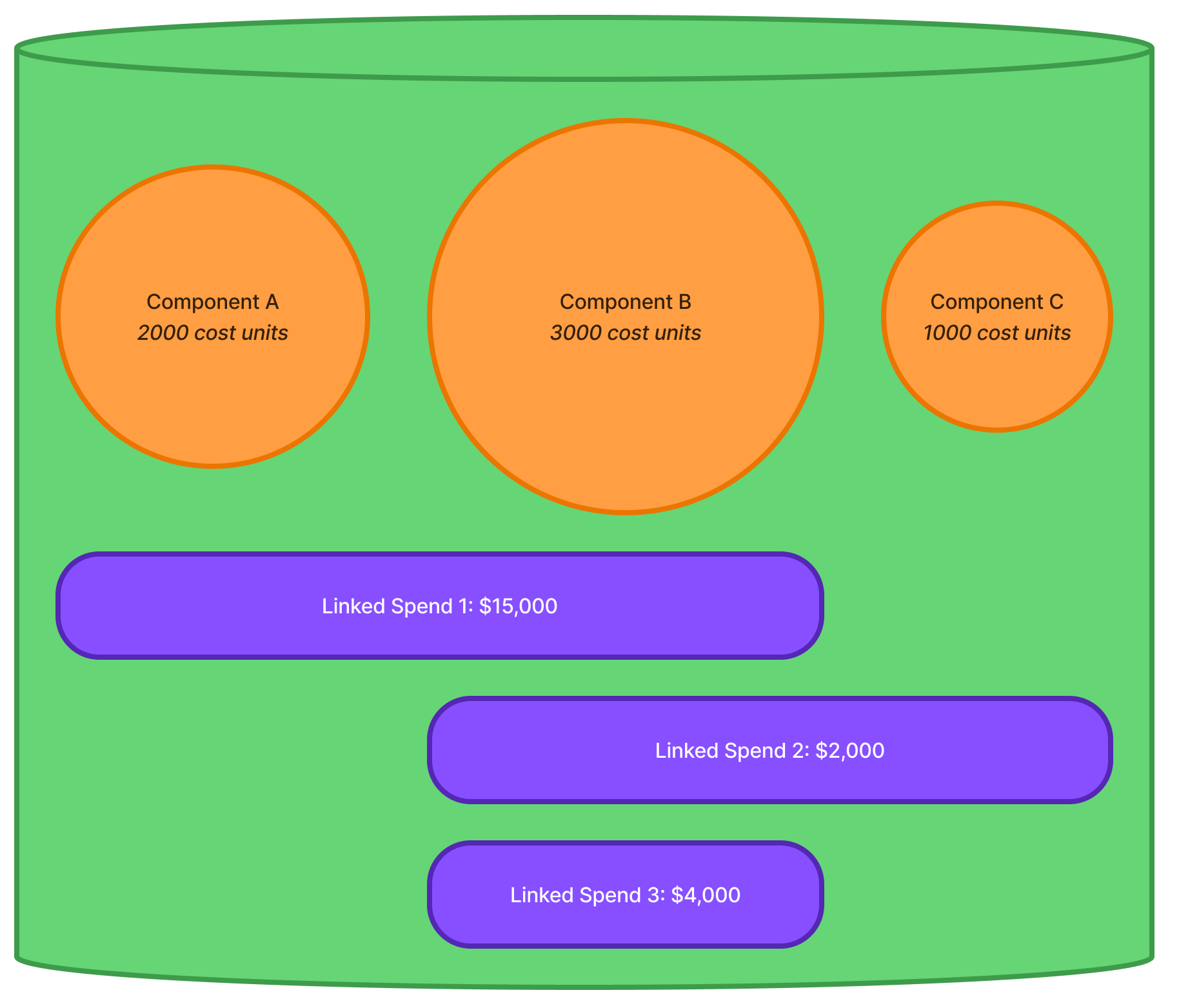Linked Capital Spends
Within the Metrix Asset Management system, a Capital Spend refers to an amount of money that has been incurred against a specific project (Budget Bucket) and will be Capitalised to the underlying Asset Components at the conclusion of the project.
A Linked Capital Spend is one of two types of Capital Spends that can be allocated to a Budget Bucket (the other being a Global Capital Spend). A spend type of Global or Linked simply controls how the Capital Spend is capitalised/recognised against the underlying Asset Components at the end of the project. In either spend type, the total Capital Spend amount is the total amount of all Capital Spends that have been incurred against the Budget Bucket.
The term “Linked” refers to the fact that the Capital Spend is linked to one or more specific Asset Components. When it comes to capitalising/recognising the Capital Spends at the end of the project, Linked Capital Spends are distributed evenly (based on Cost Units) across ONLY the Budget Bucket Items that are linked to the Capital Spend. Items that are not linked to the Capital Spend will not receive any of the specifically linked Capital Spend amount.
Although the following may seem complicated, it is important to understand that the system will automatically calculate all of this on your behalf. As an end user, you need only understand the principles behind it, and how to set up the Linked Capital Spends correctly.
I.e. “this spend only relates to these three components over here…”
The system will do the rest!
In the above example, the Budget Bucket has three items (Component A, Component B, and Component C) with differing cost unit values. Altogether, they combine with a total cost unit value of 6000. The Budget Bucket also has three (3) Linked Capital Spends allocated to it, one for $15,000, one for $2,000, and the other for $4,000. The total Capital Spend for the Budget Bucket is $21,000.
To calculate the ‘share’ of the Linked Capital Spends that each item will receive, the following formula is used and calculated for EACH Linked Capital Spend:
$$ [Share of Spend] = \frac{[ Item Cost Units ]}{[ Total Cost Units of all Linked Items ]} \times [ Spend Value ] $$It should be noticed that the key difference in the formulas (between global and linked spending) is that for LINKED spends, the denominator for the cost units only considers the cost units of items that are linked to the spend in question. Whereas with a global spend, the denominator considers the cost units of all items in the Budget Bucket.
Furthermore, a Global Capital Spend share is calculated once per Budget Bucket Item. A Linked Capital Spend share is calculated once per Linked Capital Spend entry, per Budget Bucket Item linked to that spend.
As noted above, calculating Linked Spend shares is a two-step process. First we must assess the Total Cost Units per Linked Spend, and then we can calculate the share of spend for each item. The following table outlines how we can deduce the Total Cost Units for each Linked Capital Spend:
| Spend | Component A (2000) | Component B (3000) | Component C (1000) | Total Cost Units for Spend |
|---|---|---|---|---|
| Spend 1 | ✅ | ✅ | ❌ | 5000 |
| Spend 2 | ❌ | ✅ | ✅ | 4000 |
| Spend 3 | ❌ | ✅ | ❌ | 3000 |
From the above, we can see that Spend 1 is linked to Component A and Component B, which (through summing their cost units) we can see have a total of 5000 cost units. So, for each spend, the spend shares can be calculated as follows:
Spend 1: $15,000
| Bucket Item | Cost Units Share | Total Linked Spend | Share of Spend |
|---|---|---|---|
| Component A | 2000 / 5000 = 40% | $15,000 | $6,000 |
| Component B | 3000 / 5000 = 60% | $15,000 | $9,000 |
| Component C | 0 / 5000 = 0% | $15,000 | $0 |
Spend 2: $2,000
| Bucket Item | Cost Units Share | Total Linked Spend | Share of Spend |
|---|---|---|---|
| Component A | 0 / 5000 = 0% | $2,000 | $0 |
| Component B | 3000 / 4000 = 75% | $2,000 | $1,500 |
| Component C | 1000 / 4000 = 25% | $2,000 | $500 |
Spend 3: $2,000
| Bucket Item | Cost Units Share | Total Linked Spend | Share of Spend |
|---|---|---|---|
| Component A | 0 / 5000 = 0% | $0 | $0 |
| Component B | 3000 / 4000 = 100% | $2,000 | $2,000 |
| Component C | 0 / 4000 = 0% | $0 | $0 |
Putting this together is simply a matter of summing the share of spend per Component Item within the Budget Bucket. This is detailed below:
| Bucket Item | Spend 1 Share | Spend 2 Share | Spend 3 Share | Total Spend |
|---|---|---|---|---|
| Component A | $6,000 | $0 | $0 | $6,000 |
| Component B | $9,000 | $1,500 | $2,000 | $12,500 |
| Component C | $0 | $500 | $0 | $500 |
This means, when it comes to capitalising/recognising the Global Capital Spend, Component A will incur $6,000 of the overall spent amount.
